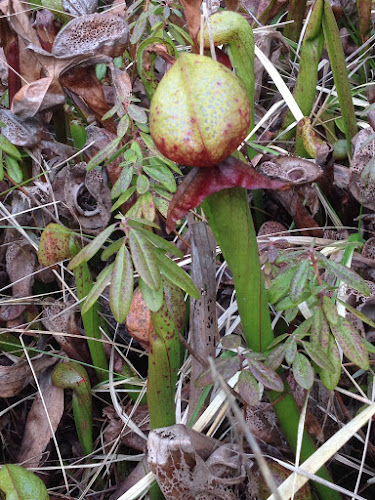Conversation lulls as the miles pass. My mind wanders. The small-living movement captures my thoughts as a tiny cottage races in and out of my vision. I glance over at Ed, his eyes focused on the road, and I fantasize about the development of the electronically controlled automobile so we could both gaze at the views, as from a train. Technological advances supplying our energy needs tease my imagination. We pass a clear cut---ugly, destructive---but better than the ones of my childhood. Seed trees remain for natural reforestation and there are irregular edges to help with the aesthetics.
In a conversation Ed had with a man in the laundromat in Oregon, at Brookings, we learned of the Smith River National Recreation Area on Highway 199. We swung onto 199 as a side trip this morning and were delighted as the laundromat man promised we would be...huge redwoods, a complex and healthy understory, and along side the road an emerald green river raging through the woods encased in stone cliffs.
A sign caught our attention, "Botanical Trail". No way were we going to drive by such an enticing invitation. Besides, Benton was focused on us with those "please let's walk" eyes. The trail was a short loop and many of the promised botanical treasures were on display. We saw the early spring foliage of Vancouveria and Lady Slippers were just emerging. Signage promised Trillium, but I was unable to see even the tiniest signs of foliage so early in the season. And then we spotted a colony of Darlingtonia.
Darlingtonia is a insect-eating plant growing in the wetlands of Southern Oregon and Northern California. As one might expect it is an endangered species because of wetland degradation over the past many decades.
The complexity of this plant's system for enjoying a good meal is fascinating. First it temps an insect to enter it's bulb-like flower by serving up a sweet nectar. Once the insect enters it cannot exit the same way it entered because filaments block the exit. At the same time the insect is attracted to the light coming in at the top of the "bulb" so flies toward the light. At the top of the bulb a slippery surface causes the victim to slip to the bottom where it is drowned in microorganism-infused water. The microorganisms in the water digest the drowned insect for the eating pleasure of the plant.
~~~
We abuse land because we regard it as a commodity belonging to us. When we see land as a community to which we belong, we may begin to use it with love and respect.
~ Aldo Leopold




No comments:
Post a Comment
garden@whidbey.com